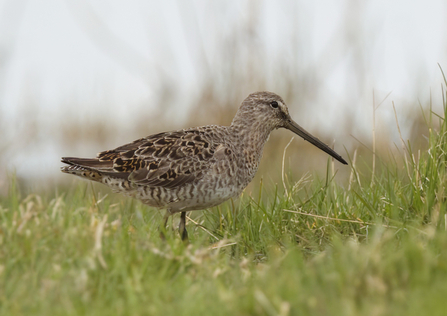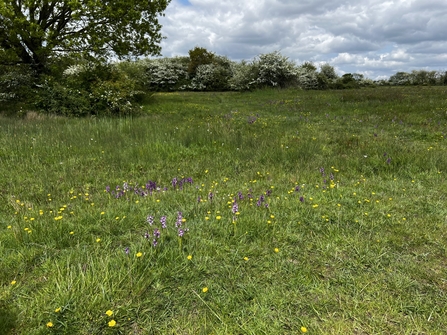Discovering a new place to go birdwatching can be so exciting. Even before you leave, you're already dreaming of your next visit and what you'll see then. In this blog, I’m going to talk about three of my favourite places to go looking for wildlife.
Old Buckenham Country Park
One of my favourite places to visit in Norfolk, which I only very recently discovered, is Old Buckenham Country Park. This is a popular site for camper and caravans and has a lovely atmosphere. As soon as you arrive, there is an inviting café waiting for you. It serves a range of food and drink, perhaps an attraction of the site to those less enthusiastic about the site's wildlife. The café is surrounded by a large area of rewilded fields and hedgerows, full of butterflies and songbirds. These include goldfinches, warblers, little owls, greenfinches, goldcrests and many more!
However, one of the most attractive parts of the park are a pair of well-vegetated lakes adjacent to the car park. These lakes are bordered with reeds and other waterside plants including bee orchids, and water-lilies carpet the surface. The beautiful and serene freshwater supports a wealth of dragonflies and damselflies, from the huge 8 cm long emperor to tiny, but pretty, small red-eyed damselflies. The latter caused me much bother, due to their similarity to the nominate red-eyed damselfly which also inhabit these waters. There is even a wildlife warden from Talk: Wildlife on hand to help with identification.
Old Buckenham Country Park also hosts one of the UK's rarest dragonflies: the Norfolk hawker. They are very distinctive: 7cm long, with an almost all-brown body, apart from a small yellow triangle on the abdomen. To distinguish them from other hawkers, look out for apple-green eyes, which are conspicuous even in flight.
It is not just one specific part of the reserve that appeals to me. It is everything combined: the dragonflies, butterflies, birds, plants, delicious food, warm atmosphere and all the rest. I would highly recommend it to anyone looking for a family day out, or just a peaceful walk by the water's edge.
NWT Cley Marshes
Another place I love to visit is NWT Cley Marshes. Cley is probably more likely to appeal to those who really love to see rare birds, of which many breed here. These include avocets, marsh harriers, bearded tits, bitterns and many more!
I can wholeheartedly say that Cley is one of the most easily accessible and bird-rich reserves in Norfolk. The reserve is essentially an ocean of reeds polka-dotted with muddy scrapes and pools, great habitats for waders and wildfowl.
You always see something out of the ordinary at this premium birding site, as I found out during my visit on the 13th of April. I saw a group of dunlin feeding restlessly & running around in search of invertebrates, a black-tailed godwit in its full red-barred breeding garb, stunning in the strong spring light, and even a long-billed dowitcher, with its greyish streaked body, faint pale supercilia and elongated dark bill – a key find for the year, in my opinion!



